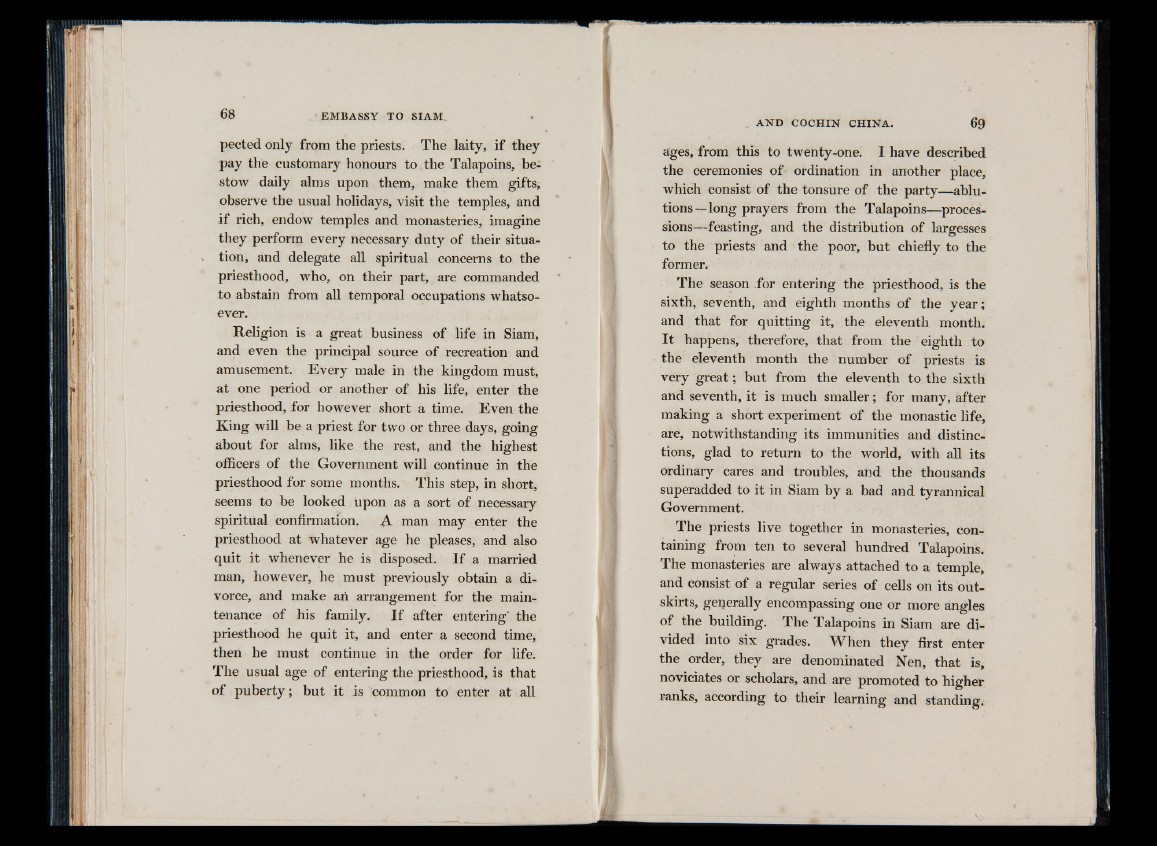
pected only from the priests. The laity, if they
pay the customary honours to the Talapoins, bestow
daily alms upon them, make them gifts,
observe the usual holidays, visit the temples, and
if rich, endow temples and monasteries, imagine
they perform every necessary duty of their situation,
and delegate all spiritual concerns to the
priesthood, who, on their part, are commanded
to abstain from all temporal occupations whatsoever.
Religion is a great business of life in Siam,
and even the principal source of recreation and
amusement. Every male in the kingdom must,
at one period or another of his life, enter the
priesthood, for however short a time. Even the
King will be a priest for two or three days, going
about for alms, like the rest, and the highest
officers of the Government will continue in the
priesthood for some months. This step, in short,
seems to be looked upon as a sort of necessary
spiritual confirmation. A man may enter the
priesthood at whatever age he pleases, and also
quit it whenever he is disposed. If a married
man, however, he must previously obtain a divorce,
and make ah arrangement for the maintenance
of his family. I f after entering" the
priesthood he quit it, and enter a second time,
then he must continue in the order for life.
The usual age of entering the priesthood, is that
of puberty; but it is common to enter at all
ages, from this to twenty-one. I have described
the ceremonies of ordination in another place,
which consist of the tonsure of the party—ablutions—
long prayers from the Talapoins—processions—
feasting, and the distribution of largesses
to the priests and the poor, but chiefly to the
former.
The season .for entering the priesthood, is the
sixth, seventh, and eighth months of the y e a r;
and that for quitting it, the eleventh month.
I t happens, therefore, that from the eighth to
the eleventh month the number of priests is
very g re a t; but from the eleventh to the sixth
and seventh, it is much smaller; for many, after
making a short experiment of the monastic life,
are, notwithstanding its immunities and distinctions,
glad to return to the world, with all its
ordinary cares and troubles, and the thousands
superadded to it in Siam by a bad and tyrannical
Government.
The priests live together in monasteries, containing
from ten to several hundred Talapoins.
The monasteries are always attached to a temple,
and consist of a regular series of cells on its outskirts,
generally encompassing one or more angles
of the building. The Talapoins in Siam are divided
into six grades. AVhen they first enter
the order, they are denominated Nen, that is,
noviciates or scholars, and are promoted to higher
ranks, according to their learning and standing.